Avery & Omar
Things To Do
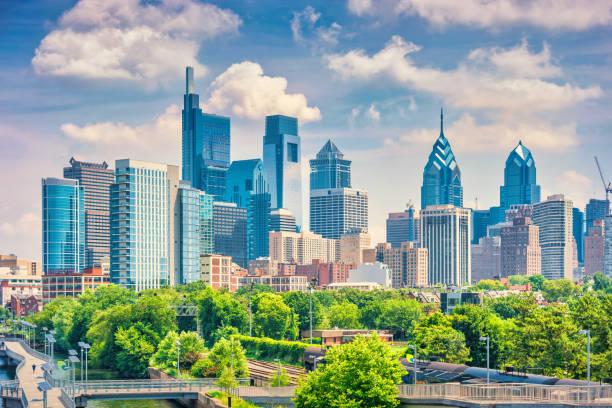
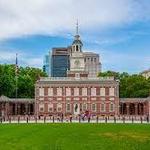
Independence Hall and Independence National Historic Park
While historical attractions abound in Philly, Independence Hall holds monumental significance to the development of the nation. In 1776, the Founding Fathers signed the Declaration of Independence in the building’s Assembly Room. Just 11 years later, representatives from a dozen states met here to lay the framework for the U.S. Constitution. Today, the UNESCO World Heritage Site is the centerpiece of Independence National Historical Park, and guided tours are available year-round. Free tours of the hall are available via timed tickets.
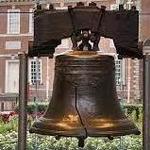
Liberty Bell Center
It doesn’t make a sound, but The Liberty Bell’s message rings loud and clear: “Proclaim liberty throughout all the land unto all the inhabitants thereof.” This inscription on the cracked but mighty bell is one reason it became a symbol to abolitionists, suffragists and other freedom-seekers around the world. The bell draws people from around the nation to snag a photo in front of the soaring glass walls overlooking Independence Hall. This American icon is free to visit year-round with no tickets required, though capacity is limited to 60 people at a time.

Philadelphia Museum of Art
The iconic Philadelphia Museum of Art sits majestically on a rise at the end of the city’s famous Benjamin Franklin Parkway. The vast collections make it one of the largest art museums in the country — and an absolute must-see on the city’s cultural circuit. The museum’s holdings encompass more than 240,000 works spanning 2,000 years, including pieces from the ancient world, medieval times, the Renaissance, the Impressionist movement and modern day. On the same trip, visitors can check out paintings by Renoir, van Gogh and Picasso; a collection of suits of armor; a one-acre outdoor sculpture garden; a complete 14th-century Buddhist temple.
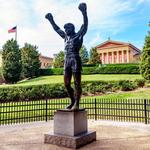
Rocky Statue
Since Rocky’s first triumphant run on the silver screen, the steps of the Philadelphia Museum of Art have become an international destination. Travelers from around the world embark on their own jog up the stairs, pumping their fists in the air as they cherish the spectacular view of the Benjamin Franklin Parkway and the city skyline. To finish off the experience, head to the bottom of the stairs and snap a photo with the bronze statue of Rocky. The Rocky statue, originally created for a scene in Rocky III is now a real-life monument to the favorite fictional son of the City of Brotherly Love.
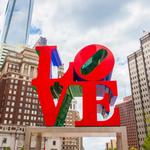
Love Park
One of the City of Brotherly Love’s best-known landmarks is LOVE itself — the Robert Indiana sculpture in John F. Kennedy Plaza (or LOVE Park, as it’s referred to by many). The sculpture was restored and repainted in 2018, and the park was entirely redesigned to add more green areas and a high-tech water feature. The AMOR sculpture — a Spanish edition of the LOVE sculpture — is on display at Sister Cities Park, a short walk from LOVE Park.

City Hall
This architectural treasure is the nation's largest and most elaborate seat of municipal government. It is topped by a 37-foot-tall bronze statue of the city's founder, William Penn. For almost 90 years a gentleman's agreement forbade any city building taller than Billy Penn's hat. The Curse of Billy Penn was an urban legend for the failure of major professional sports teams based in Philadelphia to win championships; since the 1987 construction of the One Liberty Place skyscraper. The curse is regarded as having ended, when the Philadelphia Phillies won the 2008 World Series, a year and four months after a statuette of William Penn was added to the top of the Comcast Center, thus making William Penn once again the highest point in the city. Walking tours are available of the building's exterior that provide insight into the art, architecture and history.
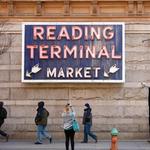
Reading Terminal Market
Set below a former railroad terminal, Center City’s 127-year-old Reading Terminal Market serves as both a dazzling tourist destination and a source for fresh produce, seafood, meats and cheese for locals. The public space also provides open seating where customers can enjoy meals from dozens of restaurants, including Pennsylvania Dutch cuisine and acclaimed DiNic’s hot roast pork sandwiches. Retail merchants sell housewares, jewelry, linens and more. The market is open for indoor dining and shopping, with many vendors also offering takeout and delivery.
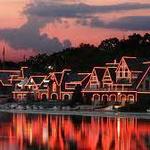
Boathouse Row
Local boating clubs take great pride in their historic 19th-century boathouses, which line the Schuylkill River just west of the Philadelphia Museum of Art. At night, lights outline one of the city’s loveliest views, aptly named Boathouse Row. Rowers of all ages and skill levels flock to the Schuylkill River to practice, compete, learn and explore the sport of rowing along Boathouse Row, be it a single rower on a peaceful early morning or an exciting weekend regatta with lots of noise, colors and fanfare. Boathouse Row features Lloyd Hall recreation center and historic rowing clubs claiming the next 10 buildings all the way to the Sedgely Club, a private social enclave, which rounds out the Row.
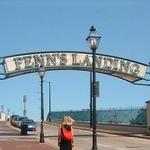
Penn's Landing
Named in honor of William Penn’s historic landing in Philadelphia in 1682, Penn’s Landing hosts events, attractions and entertainment all year long. The area along the Delaware River waterfront is home to year-round attractions like Independence Seaport Museum; stunning open spaces like Cherry Street Pier and Race Street Pier; and restaurants like the Moshulu. Perhaps most notably, Penn’s Landing is home to some of the city’s most popular seasonal parks, including Spruce Street Harbor Park and Blue Cross RiverRink Winterfest and Summerfest. Plus, throughout the year, happenings and events like farmers markets, concerts, art exhibitions and more take place throughout the spaces at Penn’s Landing. Tying everything together: stellar views of the Benjamin Franklin Bridge, the Delaware River and the Camden waterfront across the river in New Jersey.
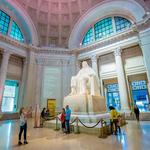
The Franklin Institute
In 1824, the Franklin Institute opened in Independence Hall to honor Benjamin Franklin and his inventiveness. In 1934, with the construction of the current building and the adjacent Fels Planetarium, it became a hands-on science museum. Today, it holds the distinction of being Pennsylvania’s most visited museum. Founded in honor of America’s first scientist, Benjamin Franklin, The Franklin Institute is one of the oldest and premier centers of science education and development in the country. Today, the Institute continues its dedication to public education and creating a passion for science by offering new and exciting access to science and technology in ways that would dazzle and delight its namesake. In the museum’s rotunda, a 20-foot-tall marble statue pays homage to the institute’s eponymous scientist and Founding Father.
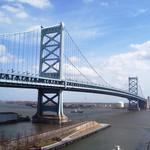
Benjamin Franklin Bridge
Snag skyline and waterfront views from a pedestrian pathway connecting Pennsylvania and New Jersey. An iconic Philadelphia sight, and once the longest suspension bridge in the world, the Benjamin Franklin Bridge was designed by architect and engineer Paul Cret (who also designed the Benjamin Franklin Parkway) and constructed in 1926. The bridge — which stretches over the Delaware River into New Jersey — allows for crossings between Philadephia and Camden by car, transit by PATCO high-speed rail, and by foot or bike via a popular pedestrian walkway and bikeway located at 5th and Race streets.
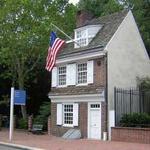
Betsy Ross House / Old City
Visitors can learn about America’s most famous flag maker at The Betsy Ross House, located in Philadelphia’s Historic District. Wander through the tiny rooms and tight staircases of the circa-1740 residence on a self-guided tour, then talk to Betsy herself about her role in the American Revolution and her fascinating work and life. Next to Independence Mall, Old City still boasts charming cobblestone streets and plenty of 18th-century charm. Its proximity to the Liberty Bell, Penn’s Landing and the Ben Franklin Bridge makes Old City a favorite for out-of-towners and residents alike.

National Constitution Center
The 160,000-square-foot National Constitution Center, explores and explains the U.S. Constitution through high-tech exhibits, artifacts, and interactive displays. The Kimmel Theater, a 350-seat, star-shaped theater, features Freedom Rising, a multimedia production combining film, a live actor and video projection on a 360° screen to tell the stirring story of “We the people.” The museum includes a rare original copy of Abraham Lincoln’s Emancipation Proclamation, and one of only a dozen surviving copies of the original Bill of Rights. Visitors love posing with the Founding Fathers in Signers’ Hall, which boasts life-size bronze statues of all of the 42 revolutionaries who signed the U.S. Constitution.
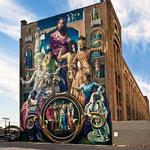
Philadelphia Mural Arts Tours
Experience firsthand how art ignites change. Explore the world’s largest outdoor art gallery and get to know Philadelphia’s stunning mural collection on a guided tour. Weave through the diverse neighborhoods of Philadelphia, getting great views of the city by foot, by vehicle, by train, by segway, or virtually! Take in the iconic imagery that makes us the Mural Capital of the World, and learn about Philly’s beautiful visual history from professional tour guides. The mural pictured in the thumbnail is located across the street from Avery's first Philadelphia apartment on Spring Garden Street.
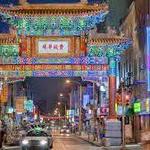
Chinatown
Beyond the colorful Chinatown Friendship Gate at 10th and Arch streets lies Philly’s vibrant Asian enclave, originally settled in the mid-19th century by Cantonese immigrants. On any given day or night, Chinatown pulses with sensory pleasures, including fantastic food and an abundance of activities. Visitors can look forward to acclaimed chefs serving steaming platters of hand-stretched noodles, seasonal street festivals and locally guided tours. Our favorite restaurant, Lee How Fook is in Chinatown and just a 3 minute walk from our building.
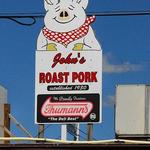
John's Roast Pork
John’s Roast Pork is a favorite cheesesteak of the residents of the City of Philadelphia. This is due, in large part, to winning the Philadelphia Inquirer's Best Cheesesteak in the Region contest in all three categories. The Italian Roast Pork sandwich is also worthy of a try. Please take our advice when in South Philly and visit John's (neither Pat's or Geno's can come even close).